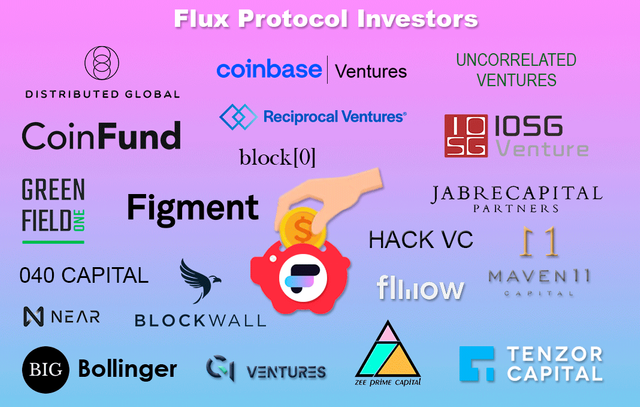Flux Protocol - an oracle from the future
Intro
The first mention of the blockchain concept appeared back in 2009, when the creator of this unique technology Satoshi Nakamoto first published a whitepaper describing the protocol and operating principles of the Bitcoin payment system. This project immediately attracted huge attention of programmers and developers from all over the world. Bitcoin and blockchain technology have become a solution to a long-standing information trust problem in the direct transfer of information without the involvement of external grants.
Then different new projects began to appear based on the Bitcoin code or created on the basis of a completely different code. The uniqueness of any blockchain lies in its immutability and transparency, due to which complete protection against hacking and confidentiality is achieved. But any blockchain has one important problem - this is an interaction with the outside world, since any external information can disrupt the sequence of block execution, thereby compromising the very purpose of blockchain technology.
Thus, oracles come to the rescue, which promptly collect the necessary information outside the blockchain network, interpret it in a certain format and transmit it to the network, observing certain rules. Also, the oracles solve the problem of interaction of different blockchains with each other.
Already today there are many companies specializing in the creation of oracles for various blockchains. One of these is Flux Protocol.
Oracle from the future
Flux Protocol is a cross-chain oracle aggregator that provides smart contracts with access to economically secure data streams. Each component of the protocol is designed to be as open as possible, without permissions or trust, allowing individuals and communities to develop customized solutions for providing and retrieving data.
Flux Protocol is developed by the Swiss non-profit organization Open Oracle Association to support the ecosystem through the distribution of grants in cash or in the form of USDC and Flux Tokens. The Flux Protocol is built on top of the leading Layer 1 protocols such as the NEAR Protocol.
The Flux Protocol project is a joint development of two brilliant developers, Jasper de Gooijer and Peter Mitchell.
To work with the protocol, the user needs to set up a testnet account in the Rust or Near CLI environment. Then, on Github itself, user can clone the sample contract request. To interact with the oracle, user must first request from the mainnet to add the contract to the Flux DAO whitelist. After that, when the contract is deployed, user can run the request. On every request for data, the user has to send a certain amount and payload. These actions prevent attackers from spamming the oracle with invalid requests.
Flux Protocol is a scalable, decentralized and consensus-free protocol for querying and processing arbitrary off-chain data for on-chain solutions. Developers can use this open source tool to create markets from scratch or integrate into existing financial products, dramatically reducing the cost and time to implement blockchain technology. The Flux Protocol has unique attributes to increase network flexibility and security, and provides economic guarantees that scale with the value provided by the oracle.
Flux DAO
FLX holders can participate in protocol governance by interacting with the Flux DAO. Suggestions may be made for adding or removing query interfaces, upgrading parts of the system, changing network settings and providing funding.
A 24-hour preferential period must pass before any proposals for whitelisting an on-demand contract can be implemented. The minimum consensus for whitelisting approval is 70% of all votes and 10% of the turnover of all FLX tokens.
Data queries are the primary mechanism for providing and resolving data in Flux Oracle. The lifecycle of a data request consists of creating a request, resolution, dispute and finalization.
A user or a contract requests data through the interface, then the oracle opens a decision window for a collateral rate based on a percentage of TVL, validators, in turn, put FLX tokens on the result in order to ultimately receive a reward. Then there is a dispute where the validators can dispute the result by placing a bet and initiate a raise. Finally, the completion stage, where the result is based on the target contract.
The security of any data request directly depends on the length of the period of its challenge; the longer the duration the more serious the task can be. This duration is always determined by the parameters of the data request and is set in the range from 5 minutes to 24 hours.
In order to stimulate the normal functioning of the protocol, fees go up and down depending on the ratio of the total value of stakes (TVS) between all request interfaces to the total market capitalization of the FLX token, aiming to 1/5. This ensures that the attacker's costs will always be higher than the amount of profit that could be obtained from performing such an attack.
The first product launched on the Flux Oracle is a fair launch prediction market called Pulse.
Investors
I would like to note that Flux Protocol has already raised $ 10.3 million for the development of its ecosystem from such famous funds as Coinbase Ventures, Distrubuted Global, CoinFund, Uncorrelated, Maven 11, Reciprocal Ventures, Jabre Capital, Greenfield One, IOSG, Flow Ventures, UMA, Near protocol. Flux Protocol also received a $ 16 million strategic contribution from Figment Capital to develop new decentralized protocols.
With such a rich arsenal of investors and a brilliant development team, the Flux Protocol is committed to build a reliable and secure open data infrastructure.
Conclusion
Flux Protocol is an open source oracle for all leading blockchains that offers low transaction fees, fast and secure data processing solutions backed by economic guarantees. The project addresses performance issues that exist in many blockchains. I believe that the Flux Protocol will take a leading place among oracles.
More details about the mechanism of the platform and additional information about the project can be found in the official whitepaper.
Follow Flux Protocol:



